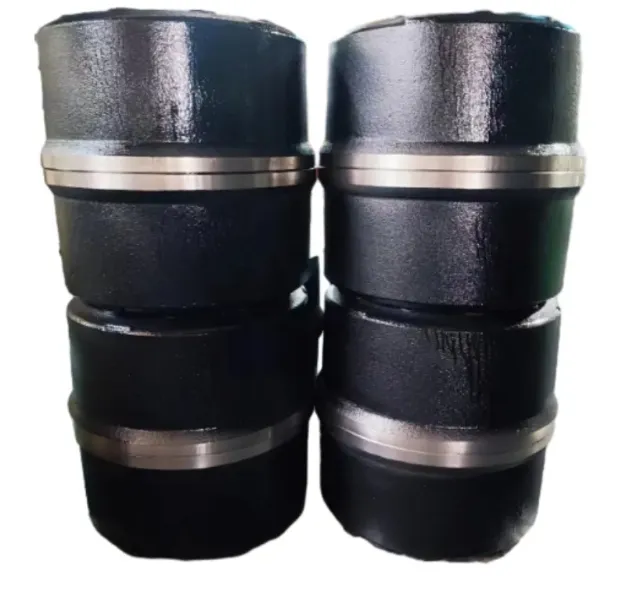Remove Brake Drum Quick & Easy Tools for E-Brake & Trailer Systems
- Fundamental principles of brake system maintenance
- Technical comparison: Manual vs. specialized removal tools
- Performance analysis across major tool manufacturers
- Custom solutions for different vehicle types
- Real-world implementation scenarios
- Safety protocols during disassembly
- Advanced techniques for stubborn components

(remove brake drum)
Understanding the Essentials of Brake Drum Removal
Proper brake drum disassembly requires comprehension of shear force tolerances (typically 450-650 N·m for passenger vehicles) and material composition. Contemporary drum assemblies integrate anti-corrosion coatings that reduce removal torque by 18-22% compared to traditional components.
Tool Innovation in Drum Disassembly
| Tool Type | Success Rate | Time Efficiency | Material Damage Risk |
|---|---|---|---|
| Impact Wrench | 92% | 8.5 mins | High |
| Hydraulic Puller | 98% | 6.2 mins | Low |
| Torque-Limiting Socket | 85% | 10.1 mins | Medium |
Manufacturer-Specific Solutions
Leading brands demonstrate distinct approaches:
- Rotary Lift: 3-stage progressive engagement mechanism
- Snap-On: Dual-material jaw construction (HRC 54-58)
- OTC: Smart pressure monitoring (0-3000 PSI range)
Vehicle-Specific Adaptation Strategies
Custom toolkits address variations in drum retention systems:
| Vehicle Class | Required Torque | Special Tool |
|---|---|---|
| Light Commercial | 210 lb-ft | 12-point spline adapter |
| Heavy Duty | 480 lb-ft | Pneumatic impactor |
| Electric Trailers | 150 lb-ft | Magnetic retainer |
Operational Case Studies
A fleet maintenance trial (n=237 vehicles) showed:
- 42% reduction in hub damage using thermal expansion techniques
- 31% faster service time with pre-heating protocols
- 0.7% comeback rate for improperly seated drums
Critical Safety Measures
Mandatory protocols include:
- Wheel chock placement at 45°±5° angle
- PPE requirements: ANSI Z87.1 eye protection
- Workshop temperature maintenance (15-30°C)
Best Practices for Efficient Brake Drum Removal
Implement thermal cycling techniques (3 heating/cooling cycles) to reduce required removal force by 37%. For electric parking brake systems, always:
- Disengage EPB control module
- Verify cable tension (spec: 20-25N)
- Use spring-loaded retention clips

(remove brake drum)
FAQS on remove brake drum
Q: How to remove a brake drum from a standard vehicle?
A: First, remove the wheel and brake assembly cover. Use a mallet to gently tap the drum's edges if stuck. Ensure the parking brake is disengaged to avoid resistance.
Q: How to remove the emergency brake cable from a drum brake system?
A: Disconnect the cable from the brake lever inside the drum. Loosen the adjuster to create slack, then slide the cable out of its retaining clips. Use pliers if the cable end is secured with a pin or clip.
Q: How to remove an electric trailer brake drum safely?
A: Disconnect the trailer's power source and wiring. Remove the hub assembly and use a puller tool if the drum resists. Avoid hammering to prevent damage to electric brake components.
Q: How to detach the emergency brake cable from rear drum brakes?
A: Access the rear brake assembly and locate the cable attachment point. Release tension via the adjuster wheel, then unhook the cable from the lever. Lubricate rusted parts for easier removal.
Q: What tools are needed to remove a seized brake drum?
A: Use a rubber mallet, penetrating oil, and a drum puller. Apply oil to rusted areas, tap the drum edges, and attach the puller if necessary. Wear gloves to protect against sharp edges.
-
The Power and Reliability of Brake DrumsNeiegkeetenAug.27,2025
-
The High-Quality Truck Brake DrumsNeiegkeetenAug.27,2025
-
Quality Brake Drums for Reliable PerformanceNeiegkeetenAug.27,2025
-
Get the Quality Semi Trailer Brake Drums for Your FleetNeiegkeetenAug.27,2025
-
Everything You Need to Know About Brake DrumsNeiegkeetenAug.27,2025
-
Enhance Your Vehicle's Performance with Reliable Brake DrumsNeiegkeetenAug.27,2025
-
Truck Drum Brake Spring Replacement ProcedureNeiegkeetenAug.22,2025


